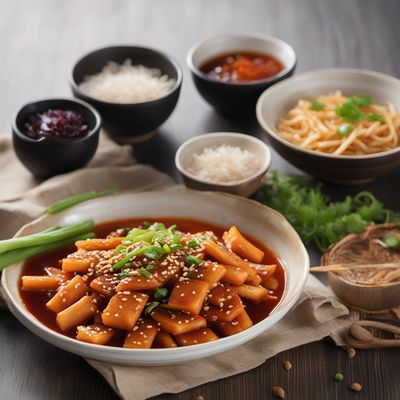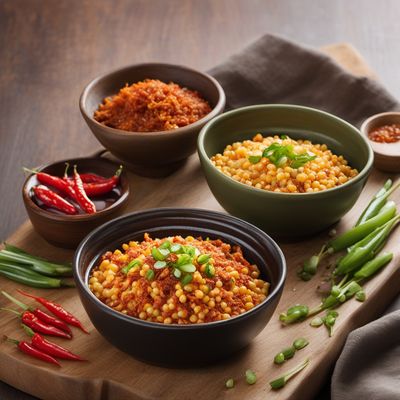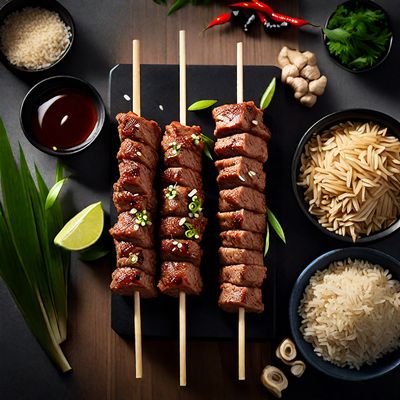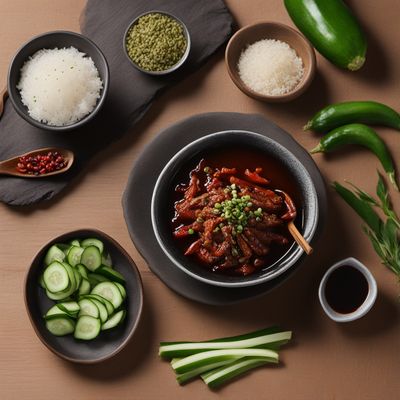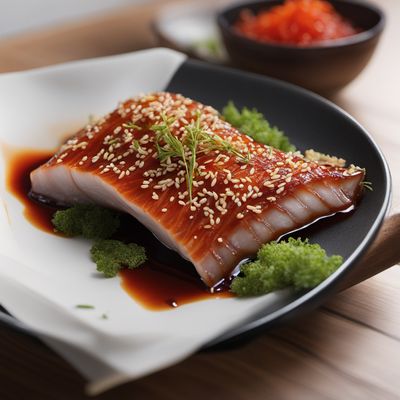
Recipe
Korean Bibimbap with Spicy Gochujang Sauce
Flavors of Korea: A Vibrant Twist on Bibimbap
4.7 out of 5
Indulge in the rich and diverse flavors of Korean cuisine with this authentic recipe for Bibimbap. This iconic dish features a colorful medley of vegetables, tender marinated beef, and a spicy gochujang sauce, all served over a bed of steamed rice.
Metadata
Preparation time
30 minutes
Cooking time
20 minutes
Total time
50 minutes
Yields
4 servings
Preparation difficulty
Medium
Suitable for
Gluten-free, Dairy-free, Nut-free, Low-fat, Low-sodium
Allergens
Soy, Sesame
Not suitable for
Vegan, Vegetarian, Paleo, Keto, High-protein
Ingredients
-
2 cups (470ml) cooked rice 2 cups (470ml) cooked rice
-
200g beef, thinly sliced 200g beef, thinly sliced
-
1 carrot, julienned 1 carrot, julienned
-
1 zucchini, julienned 1 zucchini, julienned
-
1 cup bean sprouts 1 cup bean sprouts
-
1 cup spinach 1 cup spinach
-
4 shiitake mushrooms, sliced 4 shiitake mushrooms, sliced
-
4 tablespoons gochujang (Korean red chili paste) 4 tablespoons gochujang (Korean red chili paste)
-
2 tablespoons soy sauce 2 tablespoons soy sauce
-
2 tablespoons sesame oil 2 tablespoons sesame oil
-
2 cloves garlic, minced 2 cloves garlic, minced
-
2 tablespoons vegetable oil 2 tablespoons vegetable oil
-
Salt, to taste Salt, to taste
-
Sesame seeds, for garnish Sesame seeds, for garnish
-
4 fried eggs (optional) 4 fried eggs (optional)
Nutrition
- Calories (kcal / KJ): 450 kcal / 1884 KJ
- Fat (total, saturated): 12g, 3g
- Carbohydrates (total, sugars): 60g, 5g
- Protein: 25g
- Fiber: 6g
- Salt: 2g
Preparation
-
1.In a bowl, combine the beef, soy sauce, sesame oil, minced garlic, and a pinch of salt. Mix well and let it marinate for at least 30 minutes.
-
2.Heat 1 tablespoon of vegetable oil in a pan over medium heat. Stir-fry the marinated beef until cooked through. Set aside.
-
3.In the same pan, add another tablespoon of vegetable oil and stir-fry the carrots, zucchini, bean sprouts, spinach, and shiitake mushrooms separately until each is tender-crisp. Season with a pinch of salt while cooking.
-
4.In a small bowl, mix the gochujang paste with 2 tablespoons of water to make a smooth sauce.
-
5.To serve, divide the cooked rice among four bowls. Arrange the cooked vegetables and beef on top of the rice. Drizzle the gochujang sauce over the ingredients.
-
6.Garnish with sesame seeds and top each bowl with a fried egg, if desired.
-
7.Mix everything together before eating to enjoy the flavors in each bite.
Treat your ingredients with care...
- Beef — For a more tender result, slice the beef against the grain.
- Gochujang — Adjust the amount of gochujang according to your spice preference. Add more for extra heat or reduce for a milder flavor.
- Bean sprouts — Blanch the bean sprouts in boiling water for a minute before stir-frying to maintain their crispness.
Tips & Tricks
- To save time, you can prepare the vegetables and marinate the beef in advance.
- Customize your Bibimbap by adding other vegetables such as cucumber, radish, or bell peppers.
- For a vegetarian version, substitute the beef with tofu or tempeh.
- Experiment with different toppings like kimchi or pickled vegetables for added flavor.
- Serve with a side of Korean seaweed soup (Miyeokguk) for a complete meal.
Serving advice
Serve the Bibimbap hot and mix all the ingredients together thoroughly before eating to fully enjoy the flavors.
Presentation advice
Arrange the colorful vegetables and beef on top of the rice in a visually appealing manner. Top with a fried egg and sprinkle sesame seeds for an attractive presentation.
More recipes...
More Korean cuisine dishes » Browse all

Ojingeojeot
Spicy Pickled Squid
Ojingeojeot is a Korean dish made with fermented squid. It is a popular side dish in Korean cuisine and is often served with rice and other Korean dishes.

Dubu jorim
Braised Tofu
Dubu jorim is a Korean side dish made with tofu that has been braised in a savory sauce. It is a popular dish in Korean cuisine and is often...
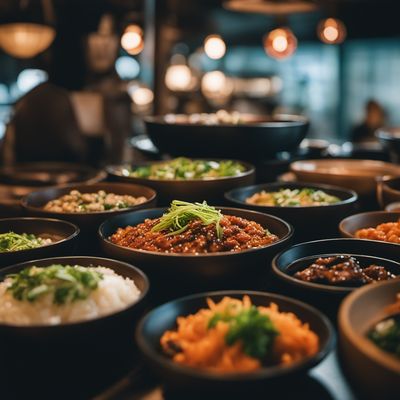
Banchan
Banchan is a Korean term for a variety of small dishes served as side dishes with rice and soup. These dishes are meant to be shared and are an...
